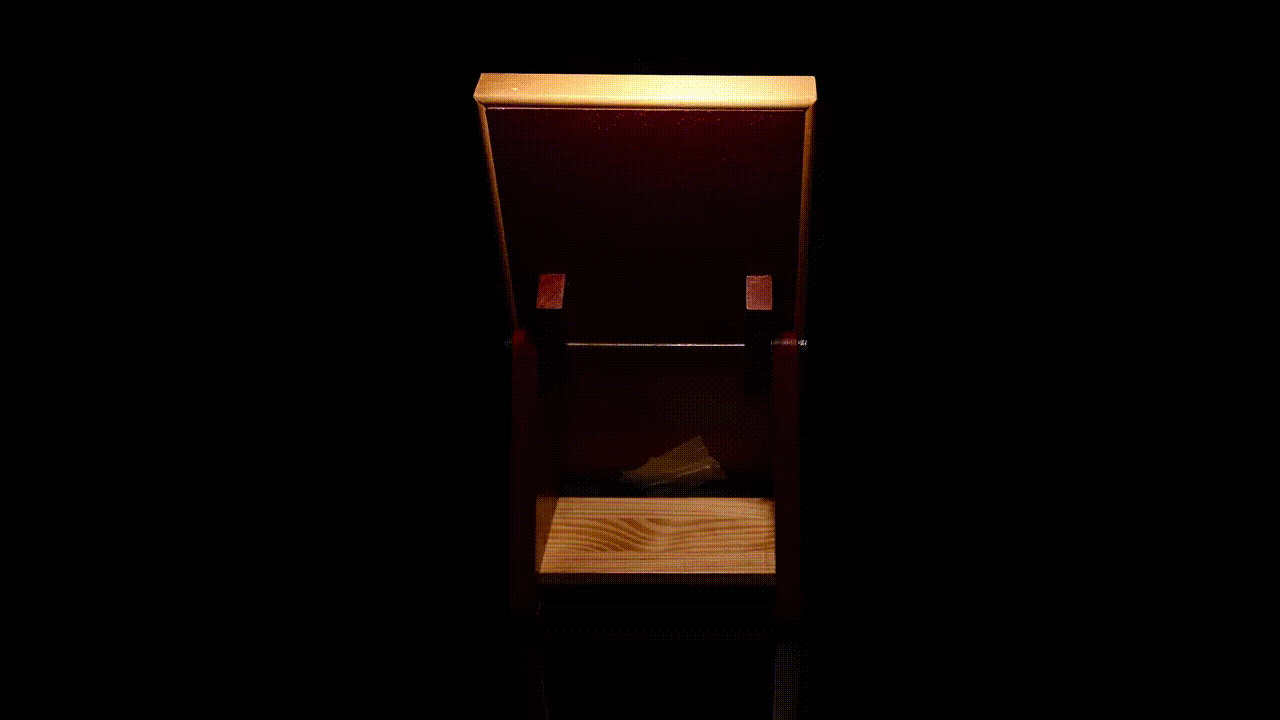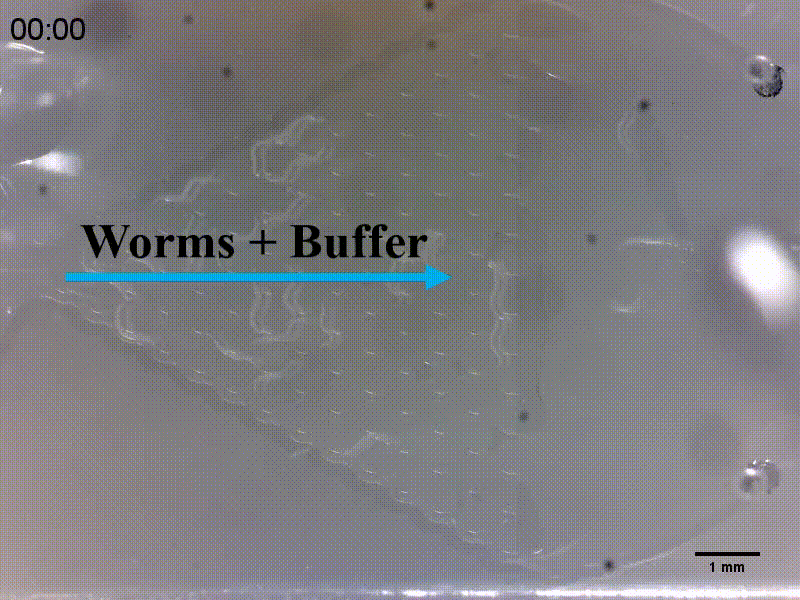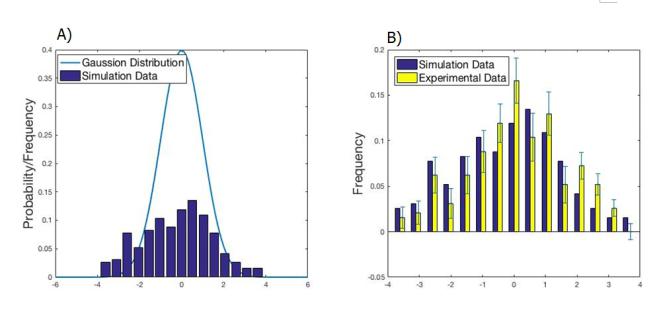Worms Locomotion
Model
Contents
This model describes the locomotion of worms in the Gaussian Plate ( the second layer of the microfluidic chip). It is based on the mathematic model of the Galton Nail Plate (Figure 1.)
Different from classical Galton board(Fig.1), it is worms rather than balls running on the plate. We use worms as the “ball”. However, when a worm is choosing a direction at the crossing, its previous choice may influence current choice due to worm’s relative long body.
This model is applied in the experiment to demonstrate whether the insertion undermine the function of AWA and AWB neurons. Worms with normal neurons will be attracted by diacetyl and be repelled by 2-nonanone.
Building A Mathematic Model
Whether the Gaussian Plate works as our expectation is the main concern in this experiment. Different from classical Galton board, there are worms rather than balls running on the plate. The previous choice of them may affect the current choice due to their relatively long body.
We introduced a parameter ‘ka’ (0<=ka<=1) in our model to describe the extent that the previous choice will influences on the current choice.
The ‘ka’ is defined as the absolute value of difference between the probability of two direction choices (Fig 3. ).
It means the greater the ‘ka’ is the greater the influence of previous choice is. Especially, when ‘ka’ is zero, the simulation model is more like Gaussian distribution.
We counted the number of C. elegans in each channel and calculated the parameter ‘ka’ without chemical at first(Fig 4.).
Gaussian distribution is very common in nature and important in statistics. This distribution is tied to many natural phenomena. In our experiment, we use the Gaussian Plate to see C. elegans’’ distribution. Then we use it to see the change of C. elegans’’ distribution after adding attraction or repellent factor (Fig.2).
Firstly, we introduced a parameter ‘ka’ (0<=ka<=1) to describe how much the previous choice influences the current choice
The ‘ka’ is defined as the absolute value of the difference between the probability of two direction choices.
It means the greater the ‘ka’ is the greater the influence of previous choice is. Especially, when ‘ka’ is zero, the simulation model is more like Gaussian distribution.
We counted the number of C. elegans in each channel and calculated the parameter ‘ka’ at first (Fig.4).
| Count | Firstly Turn Left | Firstly Turn Right |
| Secondly Turn Left | 28 | 9 |
| Secondly Turn Right | 12 | 14 |
k=\frac{same turning-different turning}{total turning}=\frac{(28+14-12-9)}{(28+14+12+9)}=0.3
Assume that ‘ka’ doesn’t change when we add attraction or repellent factors. Then this model can be used to stimulate C. elegans preference considering ‘ka’.
We can analyze how much the factor attracts or repels the C. elegans by introducing another parameter ‘kperf’ (0<=kperf<=1).
Both parameters set above are dependent on the assumption that parameters values are proportional to the probability they affect the C. elegans’ choice.
For example, if ‘ka’ is to ‘0’, previous choice doesn’t affect current choice at all. If ‘’ka is ‘1’, the worm’s next choice is totally determined by the previous choice and the final result will show polarized distribution( C. elegans only pass through the rightmost or leftmost channels). When ‘ka’ is 0.5, a worm has 25% probability of turning right/left and 75% probability of turning left/right at a crossing. ‘kb’ (attraction or repellent parameter) is the same as ‘ka’
Comparing simulation results with experimental data
Simulation results are shown in two steps:
- Determine parameter ‘ka’: According to the observation above, ‘ka’ = 0.3.
- Compare the simulation result (10000 worms) with the experimental data (193 worms) without chemical added. Chi-square test is used to examine the goodness of fit (X2)
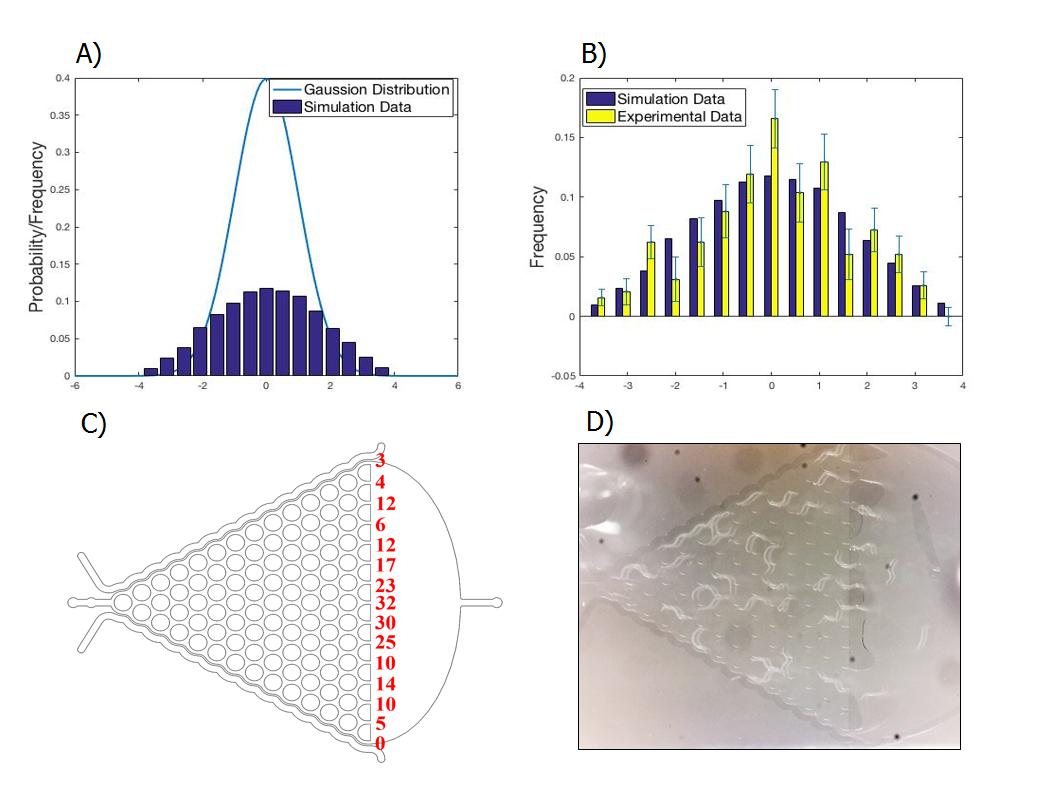
- We simulate the process with the same number (193 worms) as the number of worms used in experiment.
- Compare simulated data with experimental data after adding diacetyl by using different 'kb'( parameter set for showing attraction or repellent to C. elegans ). kb is about 0.1.
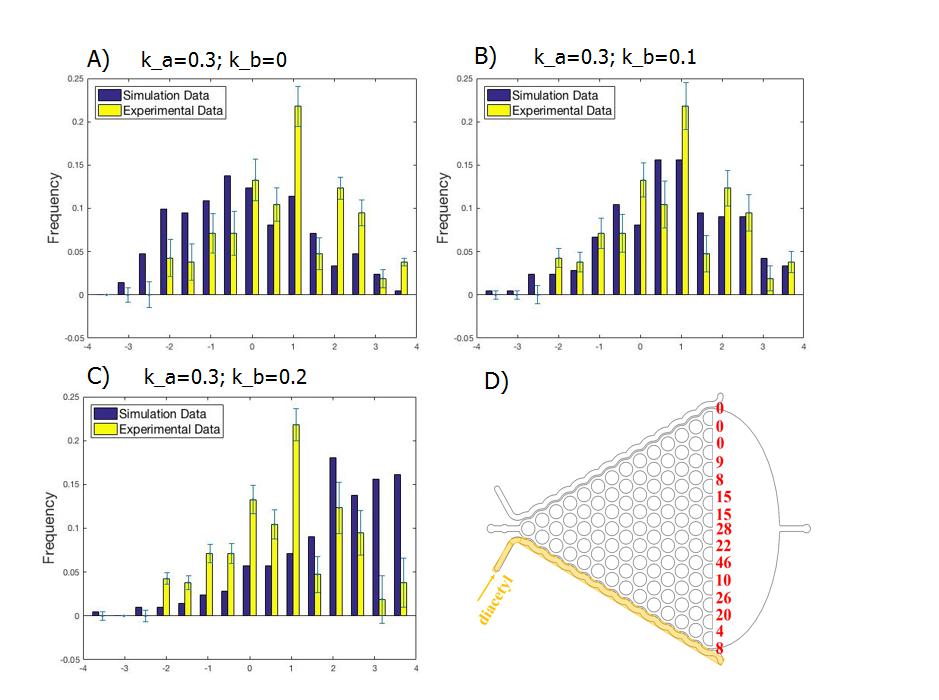
Conclusion
·In the experiment, the “influence factor” of previous choice-making ka=0.3. It means that if a worm turn left at the first crossing, the possibility of turning left at the second crossing is will be 30% more than that of turning right.
·The “attraction factor” of diacetyle to worms kb=0.1. The added diacetyl will attract worms toward the side with higher diacetyle concentration.

